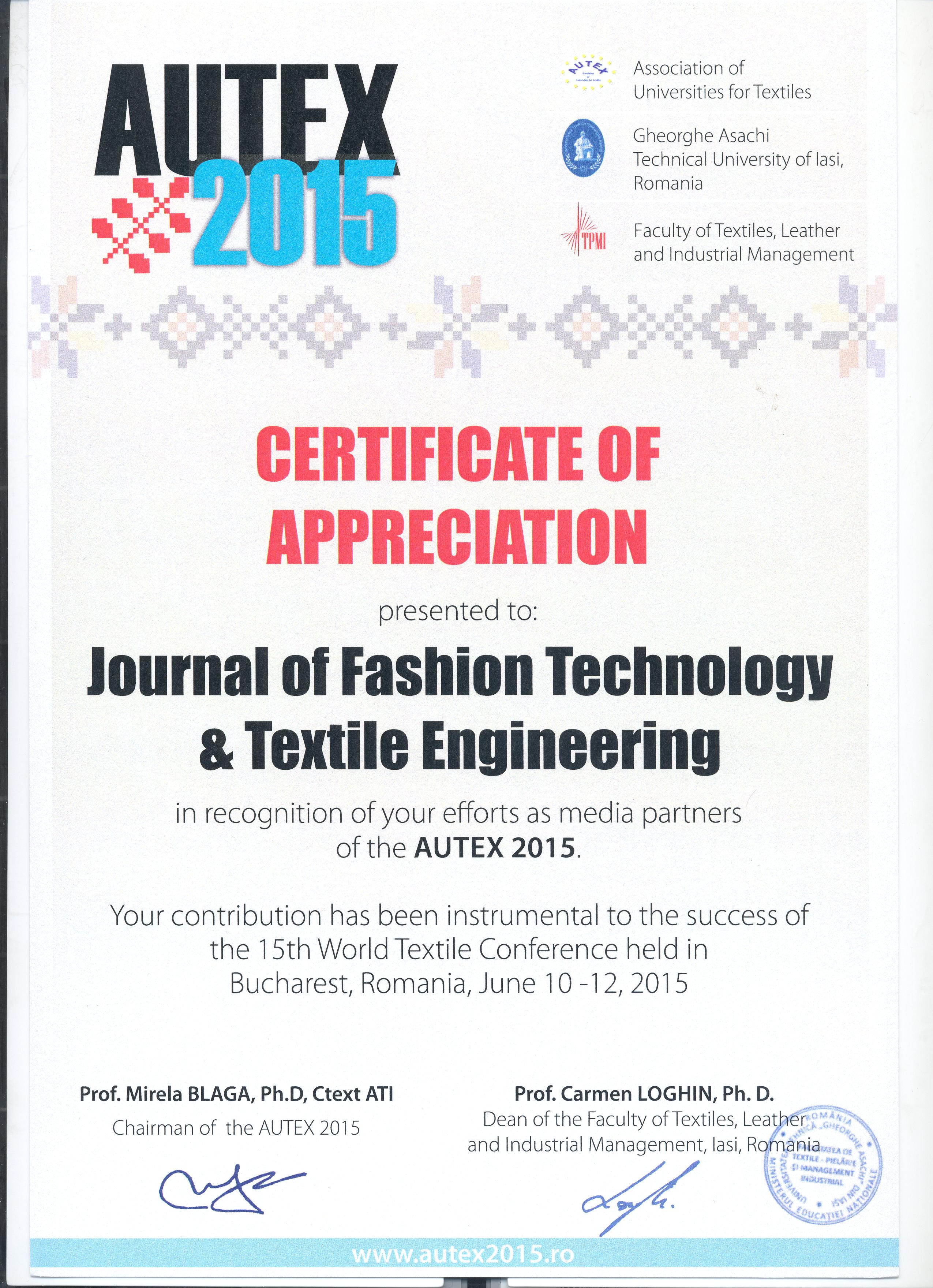Commentary, J Fashion Technol Textile Vol: 12 Issue: 6
Zigzag Tailoring Technique: A Combination of Precision and Creativity
Vinaiys Fories*
1Department of Apparel and Textile Engineering, Donghua University, Shanghai, China
*Corresponding Author: Vinaiys Fories,
Department of Apparel and Textile
Engineering, Donghua University, Shanghai, China
E-mail: inaiys_fories@gmail.com
Received date: 26 November, 2024, Manuscript No. JFTTE-24-155261;
Editor assigned date: 28 November, 2024, PreQC No. JFTTE-24-155261 (PQ);
Reviewed date: 12 December, 2024, QC No. JFTTE-24-155261;
Revised date: 20 December, 2024, Manuscript No. JFTTE-24-155261 (R);
Published date: 27 December, 2024, DOI: 10.4172/2329-9568.1000383.
Citation: Fories V (2024) Zigzag Tailoring Technique: A Combination of Precision and Creativity. J Fashion Technol Textile 12:6.
Description
The zigzag tailoring technique is a unique and useful method used in the art of garment construction. This technique includes a series of stitching patterns that not only enhance the garment’s artistic appeal but also ensure durability and flexibility. The zigzag stitch, characterized by its sharp and angular shape, adds texture and interest to the fabric while providing functional benefits. Widely used in both traditional and modern tailoring, the zigzag technique has grown to become a vital part of fashion design and garment finishing. The zigzag stitch is a form of decorative stitching, where the needle moves in a back-and-forth motion, producing a series of zigzag shapes along the fabric. This technique can be performed on sewing machines or by hand, with the former being more common in industrial settings. The flexibility of the stitch allows it to be used for a variety of purposes, including edges, layers and add-ons. The zigzag stitch not only secures the fabric layers together but also provides additional stretch, making it especially useful for fabrics that require some flexibility, such as knits or spandex.
The history of the zigzag technique in tailoring early 20th century when sewing machines with zigzag stitch functions were first introduced. Initially, the stitch was primarily used for functional purposes, such as supporting layers and avoiding separating. Over time, however, it became a preferred method for adding decorative elements to garments. Designers and tailors shown that the zigzag stitch could be used productively to produce complex patterns, add texture and even duplicate hand-stitched designs, all while maintaining the garment’s structural integrity. One of the key benefits of the zigzag technique is its ability to prevent fabric from separating. When used on raw edges, the zigzag stitch helps secure the fabric and stops it from wearing, particularly in fabrics that tend to come apart easily. This is particularly useful when working with delicate materials like chiffon or silk, as it prevents the edges from deteriorating over time. Additionally, the zigzag stitch is highly effective in accommodating stretchy fabrics, such as jerseys or lycra, where a straight stitch might break due to the fabric’s elasticity.
In modern fashion, the zigzag technique has increased popularity as a means of embroidery. Designers often use the stitch to add visual interest to seams, cuffs, collars and other elements of a garment. By adjusting the stitch width, length and angle, a tailor can produce bold and striking patterns that transform an otherwise simple garment into a work of art. The use of contrasting thread colors also allows for highimpact designs, giving the garment a playful and dynamic quality. Another application of the zigzag stitch in tailoring is in the formation of decorative frills. It can be used to attach lace, ribbons, or design to a garment, producing a textured and multi-dimensional effect. The zigzag stitch helps keep these add-ons in place securely while adding a unique touch to the garment’s overall design. The technique is also widely used in quilting, where it provides a strong and decorative way to stitch layers of fabric together. In terms of tailoring, the zigzag technique has a practical side as well. It allows for more flexibility when stitching seams, particularly in garments that need to accommodate movement.
Conclusion
In conclusion, the zigzag tailoring technique has grown from a simple method for securing raw edges to an innovative and functional tool in garment production. Whether used for its decorative qualities or its ability to prevent wearing and enhance flexibility, the zigzag stitch remains a main in modern tailoring. Its versatility, durability and artistic appearance make it a powerful technique in both the hands of traditional tailors and modern designers. As fashion continues to change, the zigzag technique will certainly remain an essential part of the tailoring process, contributing infinite possibilities for both functionality and originality. Sportswear and active wear, the zigzag stitch helps ensure that the layers are strong yet flexible enough to stretch with the fabric. This makes it a perfect choice for garments that are damaged during physical activities, where comfort and durability are supreme.
 Spanish
Spanish  Chinese
Chinese  Russian
Russian  German
German  French
French  Japanese
Japanese  Portuguese
Portuguese  Hindi
Hindi 


